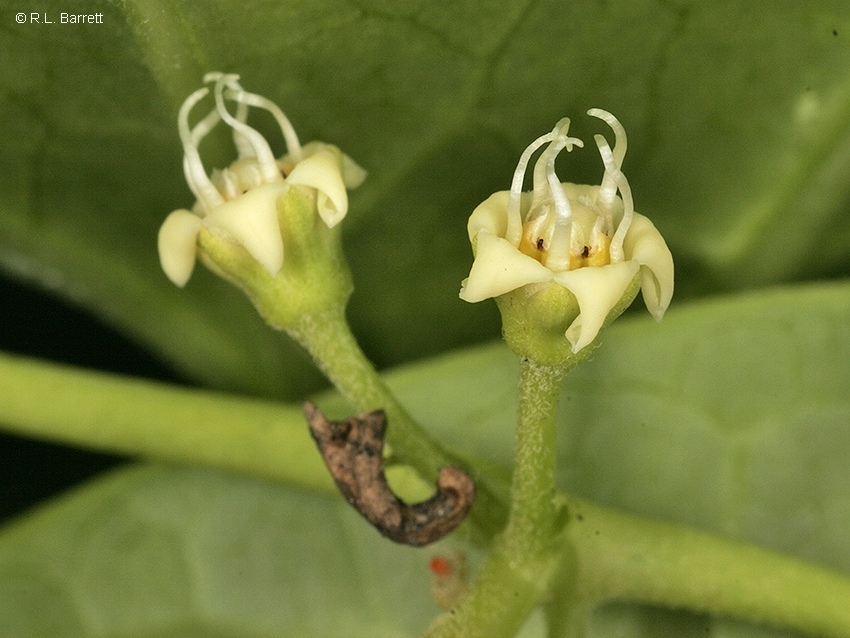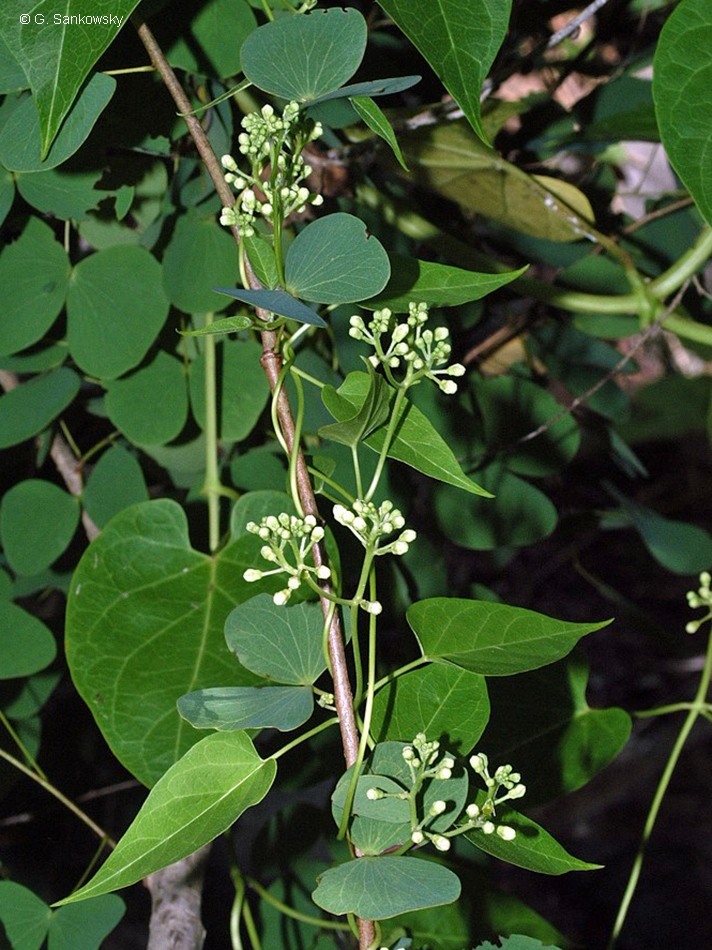Australian Tropical Rainforest Plants - Online edition
Cynanchum leptolepis (Benth.) Domin










Domin, K. (1928) Bibliotheca Botanica 89(6): 1085.
A slender vine not exceeding a stem diameter of 2 cm.
Leaf blades about 4.5-17 x 2.7-12 cm, petioles about 1.5-8 cm long. Lateral veins about 5 on each side of the midrib. About 10 colleters (small finger-like glands) present on the upper surface of the midrib close to its junction with the petiole. All plant parts produce a copious milky exudate. Small stipule-like glands usually present on the twigs between the petiole bases. Axillary buds densely clothed in woolly white hairs.
Inflorescence racemose, up to 10 cm long on a hairy peduncle about 6 cm long. Flowers about 5 mm diam. Sepals about 2-2.5 x 2.5 mm, outer surface hairy. Corolla about 4-6 x 3 mm, lobes about 2 mm long. Stamens fused together to form a structure about 3-3.5 x 3 mm. Each anther ending in a terminal appendage. Pollen aggregated in pollinia. Style head about 1 x 1.5 mm. Gynostegial corona about 4-5 mm high, cup-shaped, upper margin laciniate.
Fruits about 7 x 1.5 cm. Seeds numerous, elliptic, about 8 mm long, plumes about 35 mm long. Embryo about 4.5-5 mm long, cotyledons slightly longer and much wider than the radicle.
Features not available.





